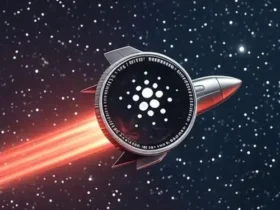Today, GPU mining of Bitcoin or Dogecoin is economically unviable.
ASIC-resistant algorithms are a way to decentralize cryptocurrency mining.
Cryptocurrency mining has become a competitive industry. GPUs (graphics processing units), thanks to which people could mine cryptocurrencies from home without specialized equipment, have seen their importance decline compared to ASICs (application-specific integrated circuits), especially in Bitcoin mining (BTC), Bitcoin Cash (BCH), Dogecoin (DOGE) and Litecoin (LTC), four of the oldest and most important cryptocurrencies. That said, GPU mining is still possible on certain sides of the mining industry.
Mining traditional cryptocurrencies is not profitable with GPU
Bitcoin, Bitcoin Cash, Dogecoin and Litecoin use proof of work (PoW).
One, like Bitcoin, uses the SHA-256 algorithm. Dogecoin, for its part, uses the Scrypt algorithm, with which DOGE and LTC can be mined combined. Today, both algorithms favor the use of ASICs.
First, because they are the best technological solution in terms of efficiency. Efficiency refers to the amount of energy the mining machine consumes to perform a given volume of work. This volume is measured in hashrates. Second, because they have become the standard yardstick for productive measurement.
Bitcoin uses the SHA-256 algorithm, which has been dominated by ASICs due to the high difficulty of mining. Currently, mining Bitcoin with GPUs is economically unfeasible, and they cannot compete with the efficiency of ASICs. Although Dogecoin was originally mined with GPUs, the merger of mining with Litecoin and the evolution towards ASICs within the Scrypt algorithm have made GPUs lose importance.
ASIC-proof consensus algorithms
GPUs remain viable for mining certain cryptoassets, beyond the most well-known mineable cryptocurrencies.
In fact, some of those algorithms that run on these alternative cryptocurrencies were designed to be ASIC-proof, which is why These would be less efficient than GPUs, or even completely useless. This resistance against ASICs is created to prevent only operators with special and advantaged equipment from being able to monopolize the mining of a certain cryptocurrency.
Furthermore, the decentralization potential of a cryptocurrency can be measured according to the “universality” of the equipment used by its mining participants. The more specialized and less common the equipment that dominates a network, the more centralized it will be. While the teams The more common and accessible they are, the more decentralized your network will be.
These are the mineable cryptocurrencies that encourage the use of GPUs
Those mentioned below are, therefore, cryptocurrencies whose consensus algorithm and network of participants still respect or encourage the use of graphical processing units for mining.
- Ethereum Classic (ETC), the fork of Ethereum, uses Ethash, an algorithm that works according to the proof-of-work (PoW) model. Ethash still allows GPU mining, and in fact remains an efficient way to mine ETC, as demonstrates Minerstats: Up to three GPUs have positive margin if the electrical cost is 0.2 USD/kWh.
- Ravencoin (RVN) has designed KAWPOW to be GPU friendly and has become popular among other cryptocurrencies for mining. According to Ravencoin’s website, this algorithm “is designed to be robust to application-specific integrated circuits (ASICs) and is designed to be efficient on consumer GPU hardware.” According to Minerstatstwo graphical processing units have a profitability of up to USD 0.60 mining Ravencoin when the electrical cost is 0.2 USD/kWh.
- Zcoin (XZC), today known as Firo, uses the MTP algorithm (Merkle Tree Proof), designed to be ASIC resistant and keep GPU mining viable and profitable. Two graphics cards are economically viable to mine this cryptocurrency based on an electrical cost of 0.2 USD/kWh.
Two other cryptocurrencies are not ideal for GPU mining today, although they deserve mention. Zcash and Kaspa.
- Zcash (ZEC) is a privacy-focused cryptocurrency that uses Equihash, a proof-of-work (PoW)-based mining algorithm. A certain sector of developers of this algorithm continue to seek to make it resistant to ASIC mining, although today these equipment (such as the Antminer Z15 Pro, 840 KH/s) dominate the currency mining exercise. According to the technical document of the algorithm, the integrated circuits must not have been much more efficient than “regular x86-based machines.”
- Kaspa (KAS) uses an algorithm called KHeavyhash, which is specifically designed to be efficient on GPUs. However, the introduction of the IceRiver KS1 and KS2, ASICs specialized in Kaspa mining, have decreased the efficiency of mining Kaspa with graphics cards.
Although some cryptocurrencies such as Bitcoin and Dogecoin have ceased to be viable for GPU mining due to the rise of ASICs, there are other options that allow miners to continue operating with less updated equipment.
The algorithms described in this article (Ethash, KAWPOW, Equihash and MTP) show that there is still life in GPU mining, and that these machines have not become history.






Leave a Reply